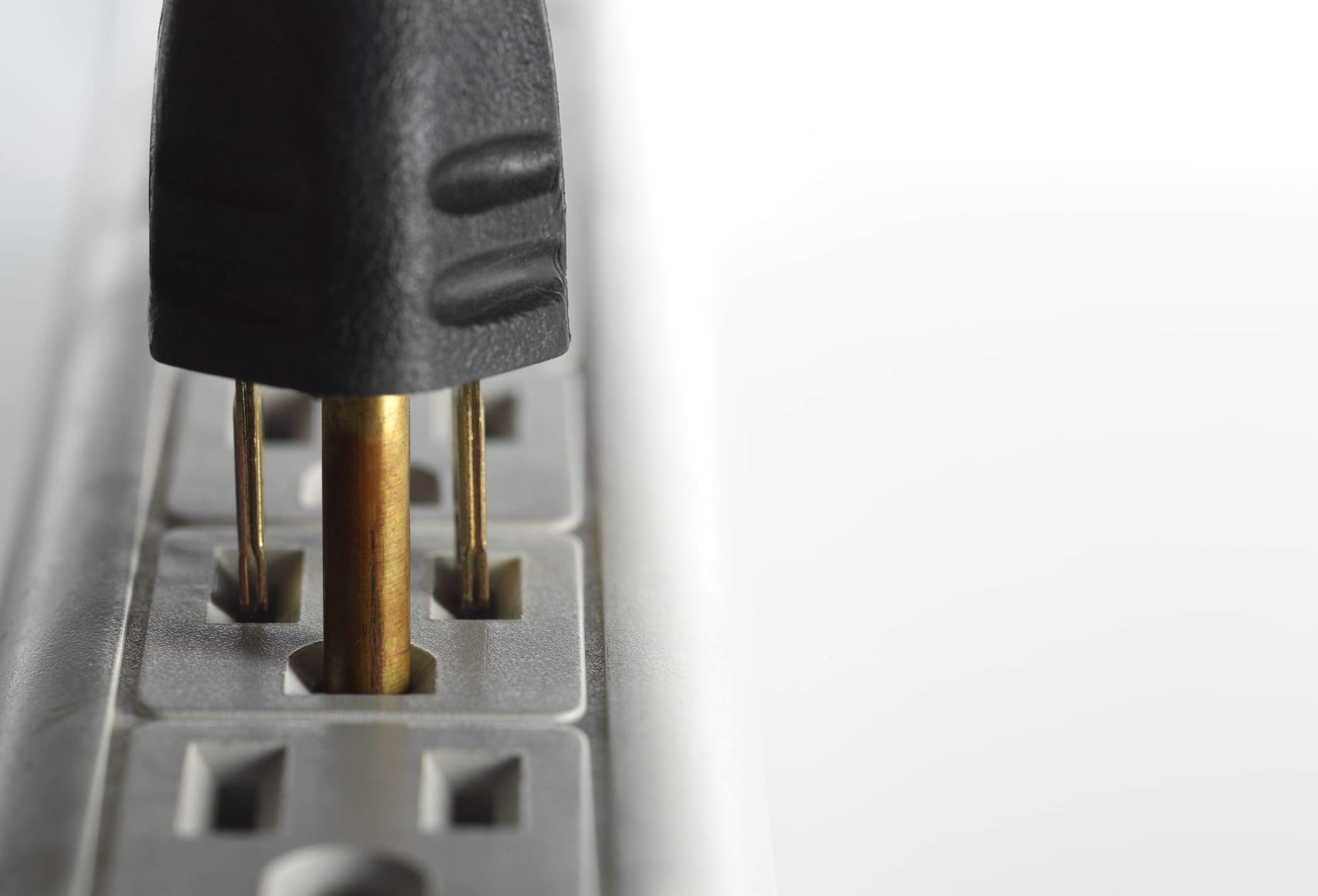Cords and Currents: A Guide to Your Home’s Electrical Safety

Electricity is an essential part of our daily lives. Our houses are all filled with outlets that we use to power the devices we depend on. In fact, it’s become so routine to have access to this technology that we often take it for granted.
May is Electrical Safety Month—a time that reminds us of the safe way to use electricity. We’ve collected some basic tips to help you secure your home and reduce electrical hazards. Of course, if you have concerns about your home’s electrical safety, consult a residential electrician.
Secure your cords
Sometimes, the easiest solution is to stretch an extension cord across the room so you can use and charge your phone at the same time. Or maybe you want a lamp beside the armchair, but there’s no outlet there. We tend to think that using an additional connection, like these, is a permanent fix, but doing so may be hazardous—they can overheat and start fires if used improperly. An estimated 3,300 house fires originate from power extenders every year.
When you are using an extension cord, make sure you keep the following things in mind:
- Do not allow anything to cover it—if the heat gets trapped, it could be a fire hazard
- Use one that is properly rated in terms of energy needs and indoor/outdoor use—a cord’s amperage rating will determine the amount of energy it can safely conduct, and outdoor extension cords have a more durable exterior to protect from the elements
- Do not create a longer cord by attaching them to each other—they could overheat and cause a fire due to electrical overload
If you find yourself in need of more power sources, consider calling an electrician to install more in your home.
Use tamper-resistant outlets
If you have children or pets in your home, or who visit frequently, you might consider installing tamper-resistant outlets. If your home was built after the Canadian Electrical Code mandate in 2009, it likely already has them in every room. However, if you have an older house, upgrading to these outlets can protect your little ones from sticking their fingers or other objects into the receptacles and getting electrocuted.
These outlets were designed with safety in mind, built with spring-loaded shutters that will only open if two prongs are inserted at the same time with equal pressure applied. As such, kids will not be able to push anything past the shutters and will not be at risk of getting electrocuted.
Cover your plugs
Electrical outlets can be dangerous, especially for curious children. It can be tempting for them to explore outlets with their fingers or other objects—but by doing so, they could be electrocuted because the static on their bodies will react with the power source.
If your older home doesn’t have tamper-resistant outlets and you haven’t yet installed them, you can look into plastic covers as a safety solution.
Rather than constantly worrying about their safety when they’re near an outlet, you can use a plastic insert or a safety cover. You can purchase these products at most hardware or baby stores. There are various styles of outlet covers available. Plugs are easy when you have an receptacle that is not used regularly, but they can be a hassle to remove. A self-closing cover requires you to slide the top part aside in order for you to access the power. Alternatively, an outlet and plug cover will cover both empty or filled outlets, which will not only keep your child safe from the power source, but also from playing with the cord that is plugged in. You can also find covers for entire power strips that hide all used and unused outlets.
Don’t overload a power source
Power strips are convenient when you have multiple devices that you want to plug in to the same source. But did you know that this could cause the circuit to overload?
A circuit overloads when there is excess electrical current flowing; your power sources could overheat and burn, potentially causing a fire. If you notice any of the following warning signs of an overloaded circuit, unplug connected devices and have an electrician examine the situation:
- Flickering or dimming lights
- Warm or discoloured wall plates
- Burning smell coming from outlets or switches
- Mild shock from connected appliances
- Frequently tripped circuit breakers
Use a surge protector
A power strip is generally safe to use for smaller devices, but major appliances should always be plugged directly in to the wall. For computers and other larger electronics, surge protectors are a safer option. However, it’s important to know the difference between a power strip and a surge protector, and when you should use each one.
Power strip: splits the electricity from one source and distributes it to additional outlets for your convenience. Essentially, this product is a type of power extender that allows you to plug several devices in to one place without providing electrical protection.
Surge protector: shields connected electronics from power surges and voltage spikes by shorting out. Typically, you’ll want to use this for your more expensive devices to protect them from incurring damage during an electrical surge.
Quite often, power strips and surge protectors look the same. So how do you know which to use?
A disadvantage of a simple power strip is that it will not protect any connected devices if there is an electrical surge. Not only could you lose your electronics, but this could also be a fire hazard because your devices and outlets could overheat, spark, and burn. If you use a surge protector, it will limit the amount of power that reaches your devices and ultimately save them from getting damaged. As long as you know what to expect from each product, the choice is up to you.
You can also install a surge suppressor at your main service panel to handle bigger rushes of electricity. It’s recommended to use a combination of main service and point-of-use protectors.
To ensure you’ve purchased a certified product, look for a CSA or cUL and UL 1449 approval. Additionally, some companies will offer a connected equipment warranty in case their product was defective and did not protect your connected devices from a power surge.
Turn off and unplug
Circuit breakers shut off automatically when there is too much electrical current flowing through the wires. If your home’s power shuts off from overload, there are a few steps you should follow when resetting it:
- Turn off any devices, lights, or appliances that are connected to the circuit—if you leave them on when you reset, you cold be at risk of electrocution
- Identify the breaker you’ve tripped: it will be the one that is sitting between the ON and OFF positions
- Flip the switch fully to the OFF position—if you try to go right to ON, it won’t reset
- Flip the switch to the ON position
If a circuit breaker is tripping often, it’s likely that there’s a regular electrical overload. You can try spacing out your electronics around the house to avoid this. For example, heating elements and large appliances usually draw more power and may trip a breaker more easily, so try to keep them separate from each other. Additionally, if your breaker trips again right after you reset it, there could be a short circuit in the system that should be examined by an electrician.
If you are ever concerned about the safety of your home’s electrical system, consult a residential electrician.
For more tips on safety in your home, check out our blog.




